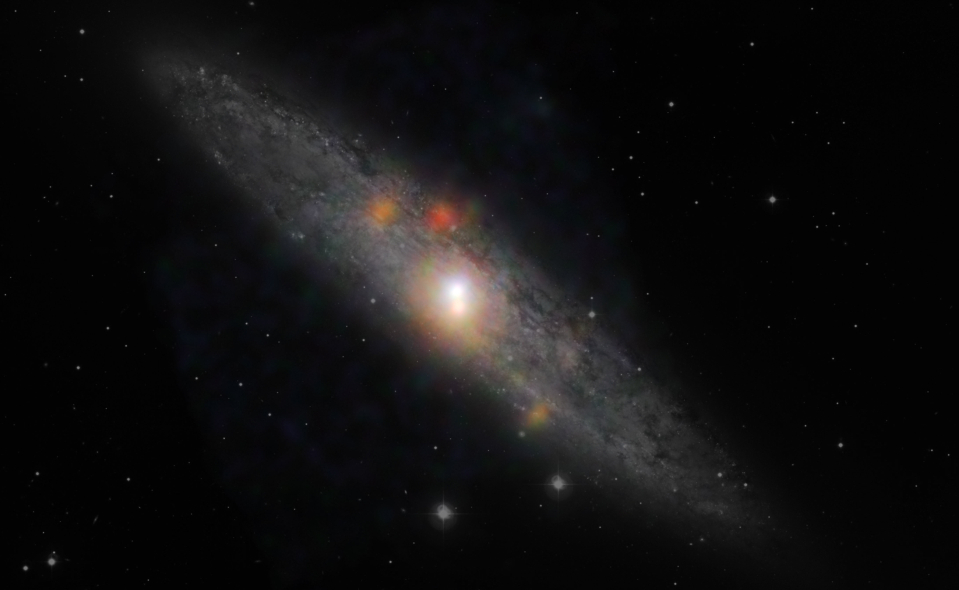
 Credit: NASA/JPL-Caltech/JHU
Credit: NASA/JPL-Caltech/JHU
Slumbering Giant
Sometimes after a heavy meal you just want to go to sleep. Evidently this same rule applies even to supermassive black holes at the centers of galaxies, at least in one particular instance. In 2003, observations with the Chandra X-ray Observatory of the Sculptor galaxy (also known as NGC 253) showed that the supermassive black hole at the center of the galaxy was actively feeding on material in its neighborhood. To monitor the progress of this feast, astronomers have gone back and re-imaged the galaxy using not only Chandra, but also the NuSTAR observatory. NuSTAR is unique since it can clearly view very high energy X-ray emission, which is a good tracer of how much the black hole is eating. The image above is a composite picture of the Sculptor galaxy in optical light, combined with a high energy X-ray image from NuSTAR. The NuSTAR sources appear as red, orange and white points in the image. To the surprise of astronomers, the NuSTAR data indicates that Sculptor's central black hole is no longer actively feeding - as if it's fallen asleep. The rate of new stars forming in the Sculptor galaxy is very high, which indicates that there should be lots of stuff for the black hole to feed on. So it's not clear at all why the black hole suddenly turned off, or if it will start up a feeding frenzy at some time in the future.
Published: June 17, 2013
<
HEA Dictionary ● Archive
● Search HEAPOW
● Other Languages
● HEAPOW on Facebook
● Download all Images
● Education ● HEAD
>

Each week the HEASARC
brings you new, exciting and beautiful images from X-ray and Gamma ray
astronomy. Check back each week and be sure to check out the HEAPOW archive!
Page Author: Dr. Michael F. Corcoran
Last modified Tuesday, 27-Feb-2024 10:06:52 EST


